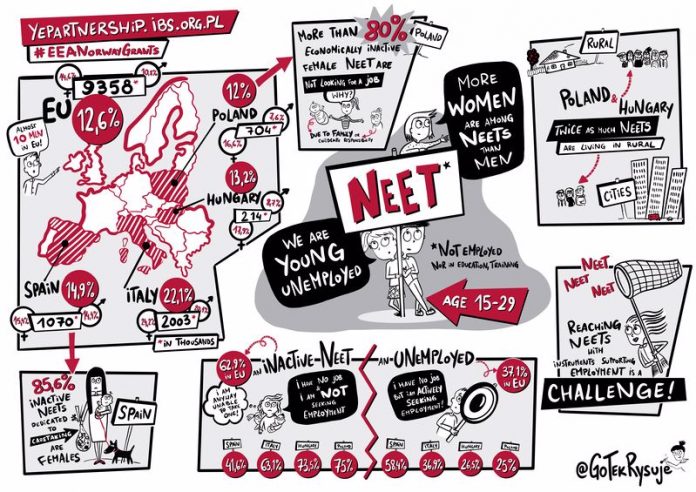The number of young people neither in employment, education, or training (NEET) has reached a seriously high level in the EU. In countries taking part in the Youth Employment Partnership project (Italy, Hungary, Poland, Spain), the NEET rate among young people varies from 12% to 22%. Unemployment has a negative influence on the quality of life, self-esteem, health, and social relations. People who experience joblessness early on are less likely to return to work and have higher earnings at future life stages.
The situation worsened over the last two years due to the COVID-19 pandemic, as in most countries the share of young NEETs increased. The pandemic reduced internship opportunities, lowered youths’ motivation, increased the risk of unemployment and precarious employment for disadvantaged youth. By limiting social interaction, the pandemic reduced the availability of information and advice from teachers, peers, prospective employers, or the public employment services (PES).
For those reasons, providing support to young jobless individuals is of paramount importance – it can prevent them from further disengagement from the labour market and increase the effectiveness of the Youth Guarantee. Reaching out to them is, however, a challenge as most young people from the NEET group do not look for employment and do not get in contact with public employment services.
There is a need to pay more attention to activating NEETs who are outside the PES registers, especially those individuals who are willing to work but remain inactive. Adequate measures which address their needs should be developed to attract them. PES should improve its outreach activities by increasing its presence in closer proximity to the potential target groups and strengthening cooperation with local stakeholders.


